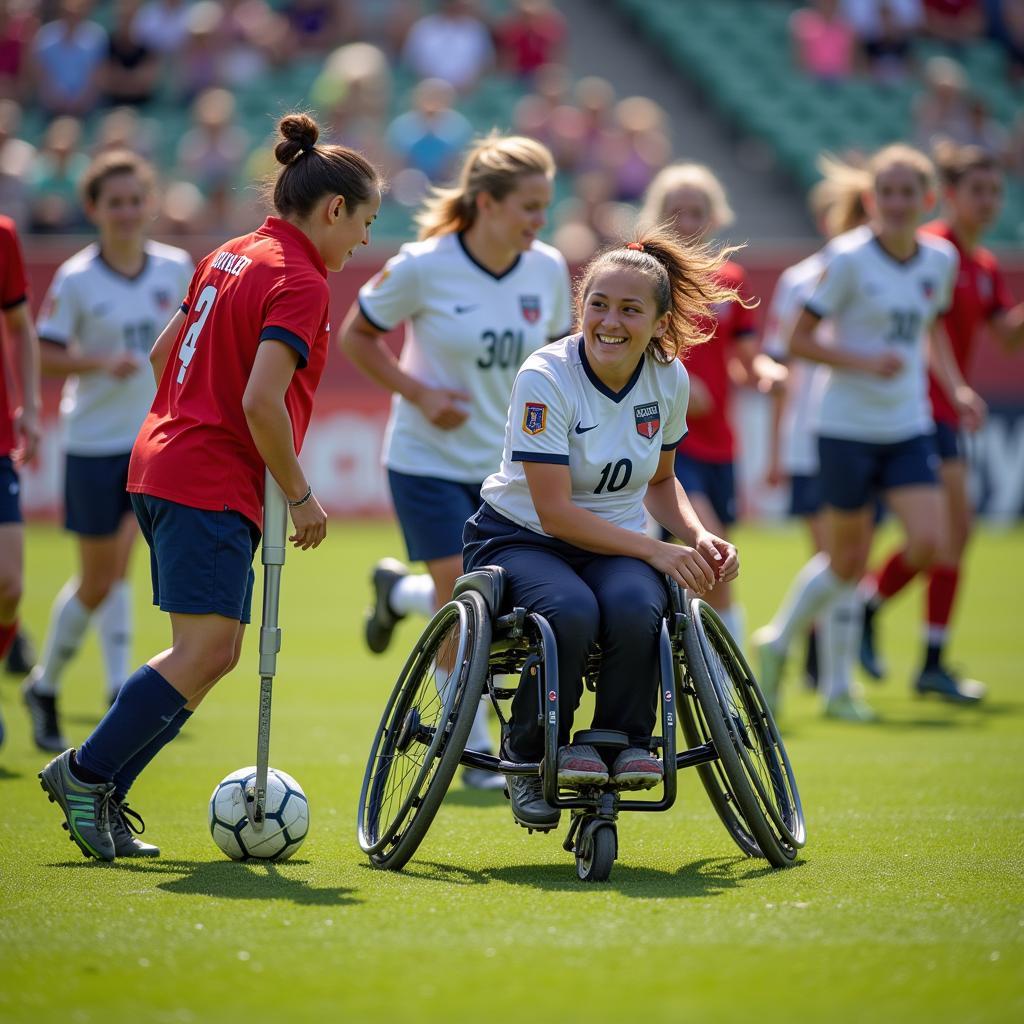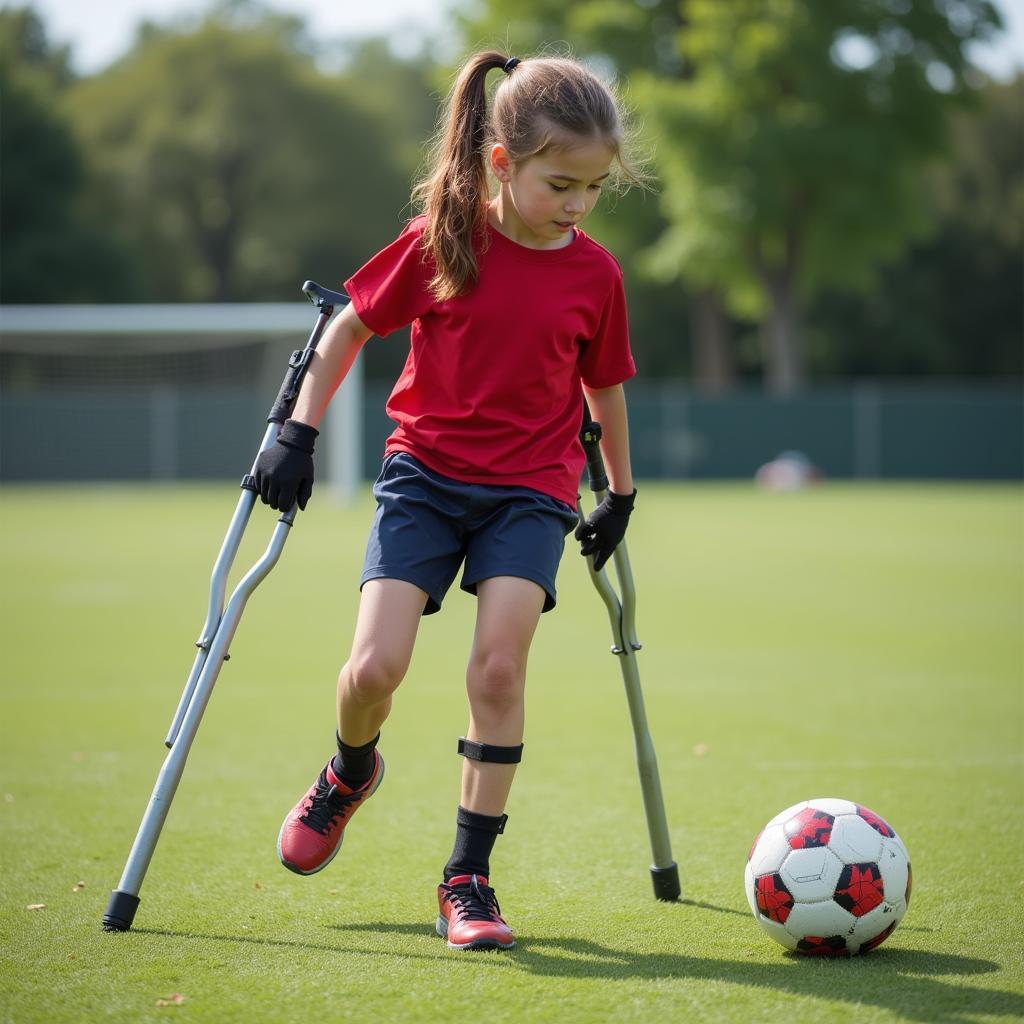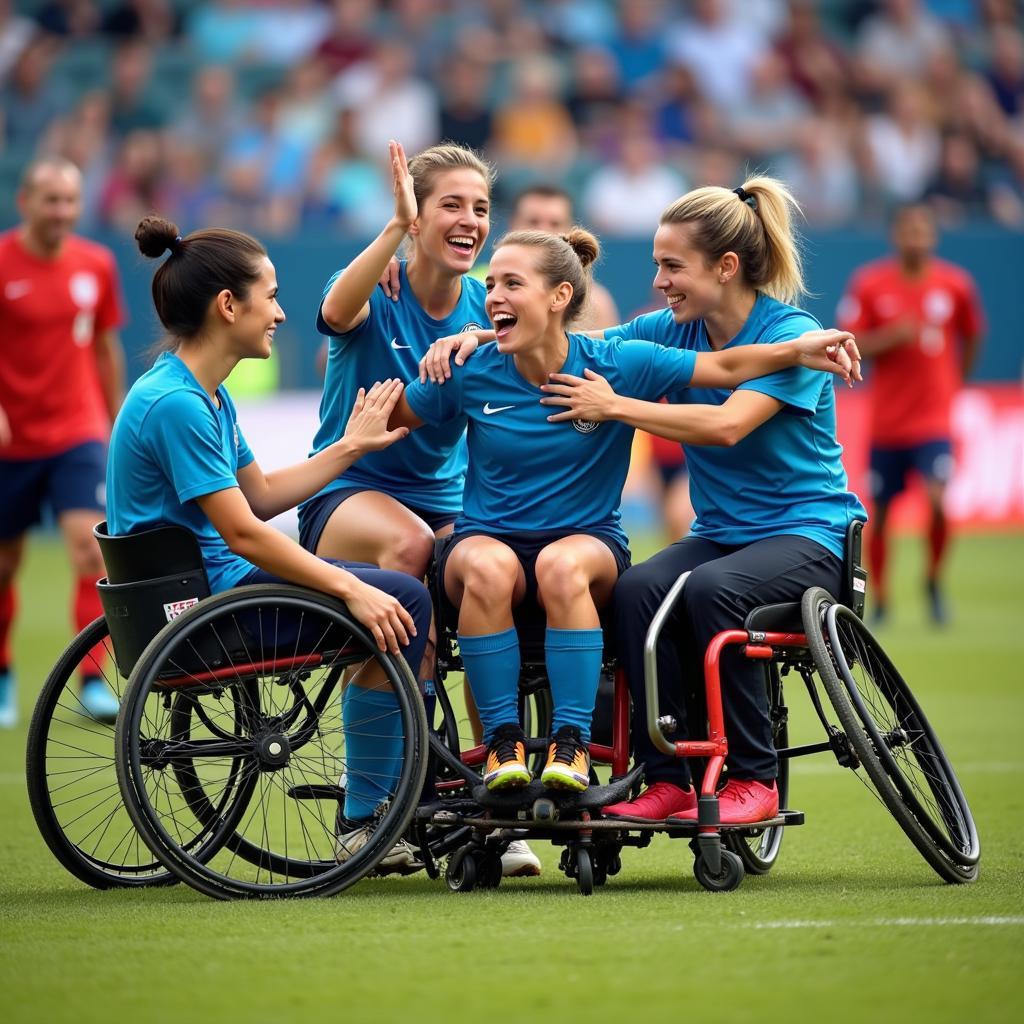Mastering the Disability Ball: A Guide to Adaptive Soccer Techniques
October 9, 2024The beautiful game of soccer knows no bounds, transcending physical limitations and embracing the passion of all who yearn to play. For aspiring athletes with disabilities, the “Disability Ball” serves as a gateway to experiencing the thrill of the sport, fostering teamwork, and achieving personal triumphs. This comprehensive guide delves into the world of adaptive soccer, exploring specialized techniques and equipment designed to empower players of all abilities.
 Adaptive soccer game with players of varying disabilities
Adaptive soccer game with players of varying disabilities
What is Disability Ball Soccer?
Disability ball soccer, often referred to as adaptive soccer, encompasses various modified versions of traditional soccer tailored to accommodate players with physical disabilities. These adaptations may include:
- Wheelchair Soccer: Players utilize specially designed sports wheelchairs equipped with footguards to maneuver and strike the ball.
- Amputee Soccer: Athletes compete using forearm crutches for support and balance while dribbling and shooting with their feet.
- Cerebral Palsy Football: This variation allows players with cerebral palsy to participate in a seven-a-side game with smaller goals and modified rules.
 Young athlete on crutches dribbling a disability ball
Young athlete on crutches dribbling a disability ball
Essential Disability Ball Techniques
Mastering fundamental soccer skills remains crucial in disability ball, albeit with adapted techniques tailored to individual needs. Let’s explore some key techniques:
1. Wheelchair Control and Ball Handling:
- Maneuvering: Players develop precise wheelchair control, utilizing quick turns and speed variations to navigate the field effectively.
- Passing and Shooting: Striking the ball requires coordinated upper body strength and timing, often using the inside of the footguard for accuracy.
2. Crutch Control and Balance:
- Stability and Mobility: Athletes on crutches prioritize balance and coordination, mastering the use of crutches for support while dribbling and shooting.
- Passing and Shooting: Similar to wheelchair soccer, players often strike the ball with their feet, requiring precision and power.
3. Communication and Teamwork:
Effective communication and teamwork are paramount in disability ball due to the unique challenges and playing styles of each athlete.
 Diverse group of athletes celebrating a goal
Diverse group of athletes celebrating a goal
Benefits of Playing Disability Ball
Engaging in disability ball offers numerous physical, social, and emotional benefits for individuals with disabilities:
- Improved Physical Fitness: The sport enhances cardiovascular health, muscle strength, coordination, and overall mobility.
- Increased Self-Confidence and Self-Esteem: Overcoming challenges and achieving goals on the field boosts self-belief and empowers individuals.
- Social Interaction and Teamwork: Participating in a team environment fosters friendships, communication skills, and a sense of belonging.
Finding Disability Ball Opportunities
Numerous organizations and leagues worldwide provide opportunities for individuals with disabilities to participate in adaptive soccer. Contact local sports clubs, community centers, or disability advocacy groups to explore available programs.
Conclusion
Disability ball is a testament to the indomitable spirit of athletes who refuse to let physical limitations define their passion for soccer. By embracing adaptive techniques and fostering a supportive environment, we can empower individuals of all abilities to experience the joy, camaraderie, and transformative power of this beautiful game. If you have any questions or need assistance in finding disability ball resources, please don’t hesitate to contact us at [email protected] or 0963418788. Our dedicated team is available 24/7 to support your journey in adaptive sports. You can also visit our center at 2M4H+PMH, Phường Nghĩa Thành, Gia Nghĩa, Đắk Nông, Việt Nam.